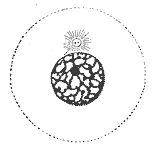Interphase: Difference between revisions
m Reverted edits by 69.119.88.226 (talk) to last version by Super-Magician |
No edit summary |
||
| Line 3: | Line 3: | ||
'''Interphase''' is the phase of the |
'''Interphase''' is the phase of the[[cell cycle]] in which the cell spends the majority of its time and performs the majority of its purposes including preparation for [[cell division]]. Interphase is considered to be the 'living' phase of the cell, in which the cell obtains nutrients, grows, copies its DNA, and conducts other "normal" cell functions. The majority of [[eukaryotic cells]] spend most of their time in interphase. Interphase does not describe a cell that is merely resting but is rather an active preparation for cell division. A common misconception is that interphase is the first stage of mitosis, however, [[prophase]] is actually the first stage.<ref>[http://www.biology.arizona.edu/Cell_bio/tutorials/cell_cycle/cells3.html The Cell Cycle & Mitosis Tutorial] The Biology Project - Cell Biology. University of Arizona.</ref> |
||
In interphase, the cell gets itself ready for [[Mitosis]] or [[Meiosis]]. [[Somatic cell]]s, or normal [[diploid]] cells of the body, go through mitosis in order to reproduce themselves through cell division. Whereas diploid [[germ cell]]s (i.e. primary [[spermatocyte]]s and primary [[oocyte]]s) go through meiosis inorder to create haploid [[gametes]] (i.e. [[sperm]] and [[ovum|ova]]) for the purpose of sexual reproduction. |
In interphase, the cell gets itself ready for [[Mitosis]] or [[Meiosis]]. [[Somatic cell]]s, or normal [[diploid]] cells of the body, go through mitosis in order to reproduce themselves through cell division. Whereas diploid [[germ cell]]s (i.e. primary [[spermatocyte]]s and primary [[oocyte]]s) go through meiosis inorder to create haploid [[gametes]] (i.e. [[sperm]] and [[ovum|ova]]) for the purpose of sexual reproduction. |
||
Revision as of 18:28, 30 June 2008


Interphase is the phase of thecell cycle in which the cell spends the majority of its time and performs the majority of its purposes including preparation for cell division. Interphase is considered to be the 'living' phase of the cell, in which the cell obtains nutrients, grows, copies its DNA, and conducts other "normal" cell functions. The majority of eukaryotic cells spend most of their time in interphase. Interphase does not describe a cell that is merely resting but is rather an active preparation for cell division. A common misconception is that interphase is the first stage of mitosis, however, prophase is actually the first stage.[1]
In interphase, the cell gets itself ready for Mitosis or Meiosis. Somatic cells, or normal diploid cells of the body, go through mitosis in order to reproduce themselves through cell division. Whereas diploid germ cells (i.e. primary spermatocytes and primary oocytes) go through meiosis inorder to create haploid gametes (i.e. sperm and ova) for the purpose of sexual reproduction.
Under a microscope interphase can be visually recognized because the nuclear membrane is still intact, the chromatin has not yet condensed and chromosomes are not visible, though the nucleolus may be visible as an enlarged dark spot. The centrioles and spindle fibers are also not yet visible, though the centrosome which contains and organizes them may be visible near the nucleus.
Stages of Interphase
There are three stages of interphase, each phase ends when a cellular checkpoint checks the accuracy of the stage's completion before proceeding to the next. The stages of interphase are:
- G1 (Gap 1), in which the cell grows and functions normally. During this time, a lot of protein synthesis occurs and the cell grows - more organelles are produced and increasing the volume of the cytoplasm. If the cell is not to divide again, it will remain in this phase.
- Synthesis (S), in which the cell duplicates its DNA (via semi-conservative replication).
- G2 (Gap 2), in which the cell resumes its growth in preparation for mitosis.
The duration of time spent in interphase and in each stage of interphase is variable and depends on both the type of cell and the species of organism it belongs to. Some human cells divide every 24 hours; in this case interphase takes about 22 hours.[citation needed]
Interphase and the cell cycle
When G2 is completed the cell enters a relatively brief period of nuclear and cellular division, called mitosis and cytokinesis respectively. After the successful completion of mitosis and cytokinesis both resulting daughter cells then re-enter G1 of interphase.
Certain types of cells enter and extended growth phase where the cell is neither dividing nor preparing to divide. This non-division phase is known as G0 phase and occurs outside of the cell cycle.
References
- ^ The Cell Cycle & Mitosis Tutorial The Biology Project - Cell Biology. University of Arizona.
